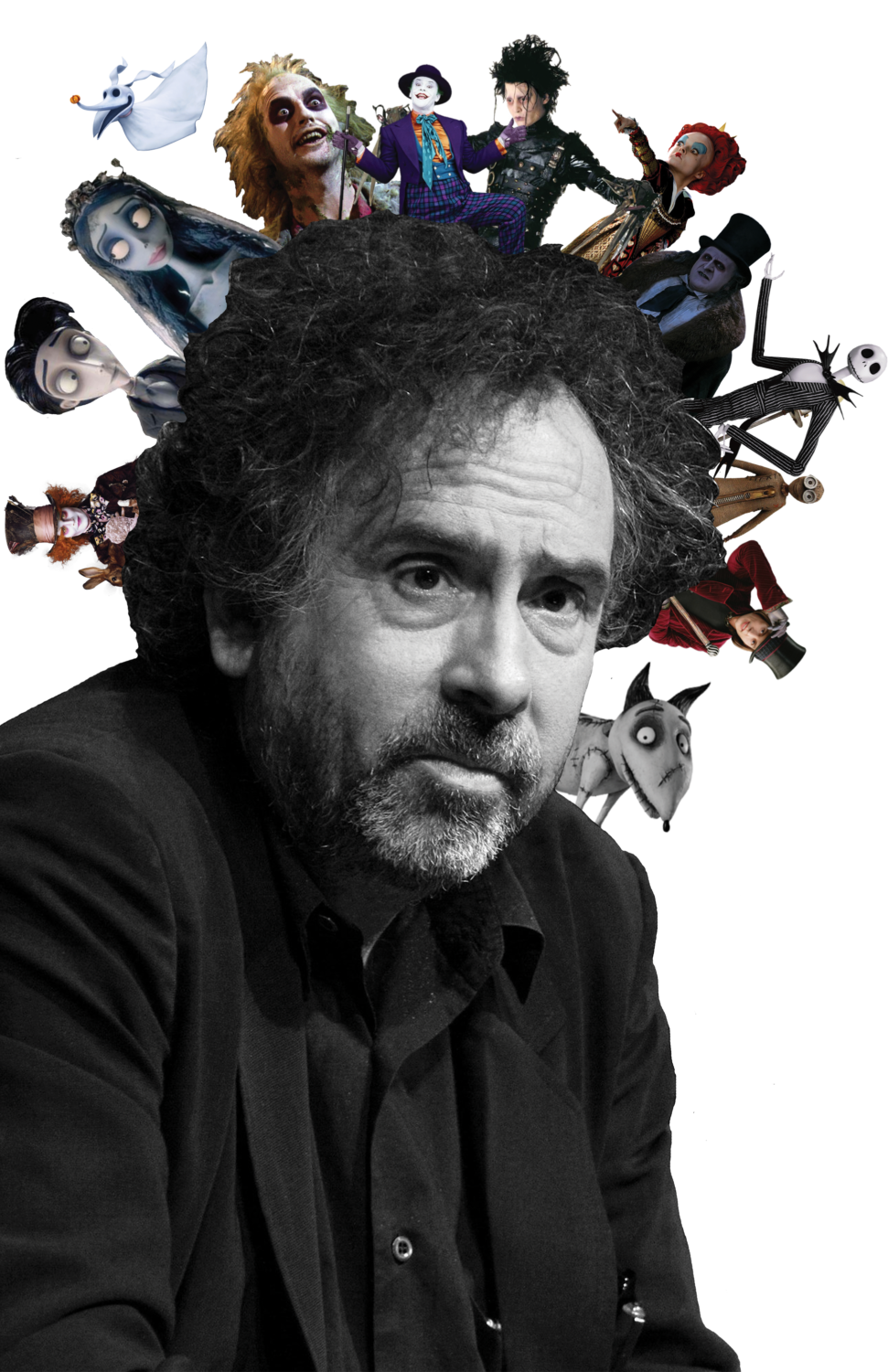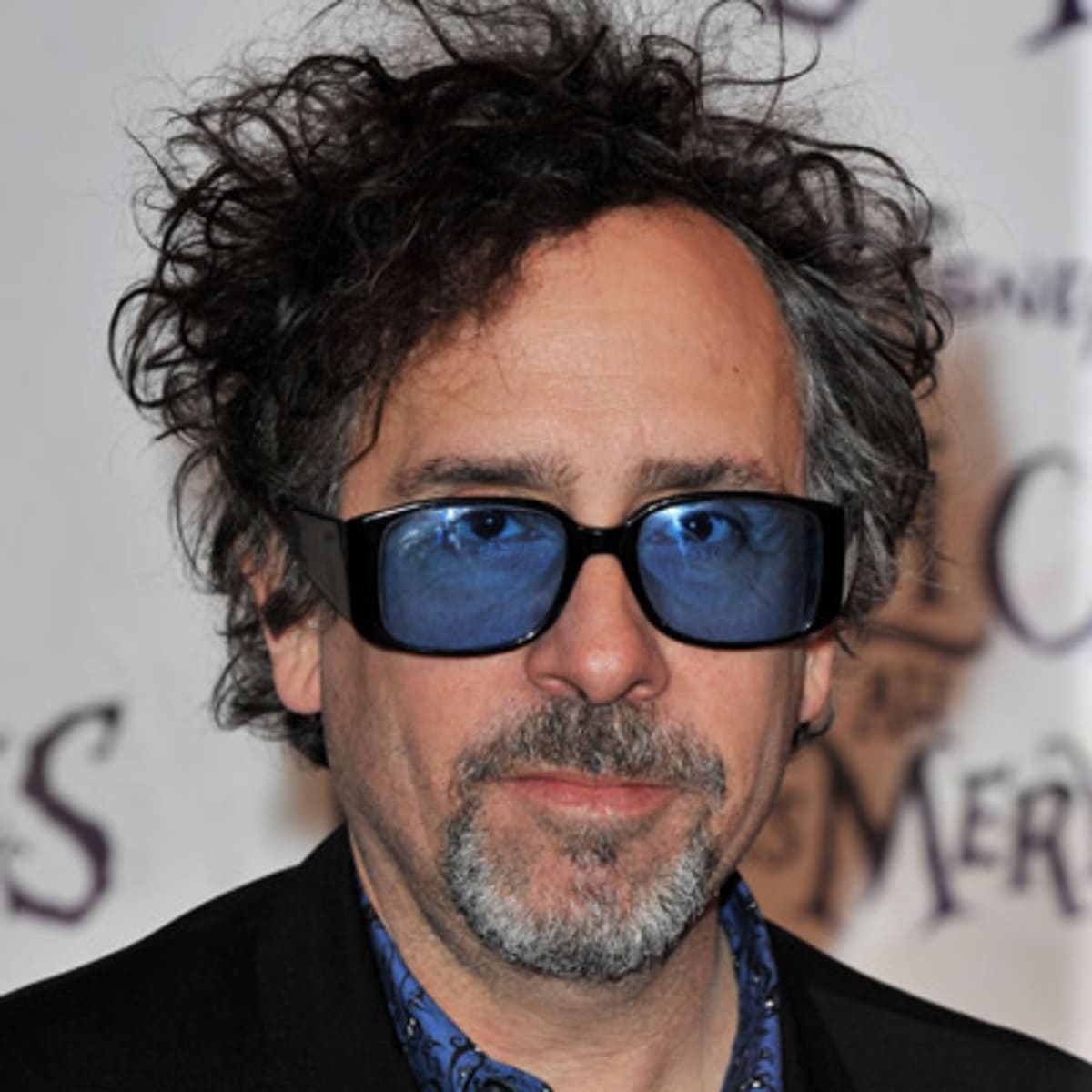Timothy Walter Burton, born on August 25, 1958, in Burbank, California, stands as a truly unique creative force in the world of motion pictures. He is, to many, a celebrated American filmmaker and a producer whose distinctive touch has left a lasting impression on how stories are told on screen. His name, you know, is almost synonymous with a particular kind of visual storytelling, one that often blends the whimsical with the slightly unsettling, creating something quite memorable for audiences far and wide.
This particular individual, you see, is widely credited with bringing a certain aesthetic, often called goth culture, into the mainstream of the American film industry. His works, in a way, have popularized a style that finds beauty in the unusual and charm in the shadows. He has, basically, crafted a reputation for creating cinematic experiences that feel both familiar and utterly new, drawing people into narratives that are, well, a little bit different from the usual fare.
Through his various roles as a director, a writer of screenplays, and a producer, Tim Burton has, actually, shaped many memorable pictures. He is, in some respects, also an artist and an animator, even an author, which just goes to show the breadth of his creative abilities. His influence, you might say, extends beyond just making movies; he has, perhaps, helped to define a certain visual language that many now recognize and appreciate, bringing a fresh perspective to popular entertainment.
Table of Contents
- The Early Life of Tim Burton - A Glimpse into His Beginnings
- What Makes Tim Burton's Style So Distinctive?
- How Did Tim Burton Popularize Goth Culture?
- Tim Burton's Creative Process - Bringing Visions to Life
- What Projects is Tim Burton Currently Working On?
- The Impact of Tim Burton's Films on Popular Culture
- Tim Burton's Artistic Vision - Beyond the Screen
- Recognitions and Achievements in Tim Burton's Career
The Early Life of Tim Burton - A Glimpse into His Beginnings
Timothy Walter Burton, as we've noted, made his first appearance in the world on August 25, 1958, in the city of Burbank, which is located in California, United States. This individual, who would later become a figure known for his unique cinematic voice, began his artistic journey quite early. You know, it's rather interesting to consider how someone's early surroundings might, perhaps, shape their later creative expressions. He grew up in a place that was, in a way, typical of American suburbia, yet his mind seemed to gravitate towards things that were, well, a little less ordinary.
From what we understand, his creative inclinations were apparent from a young age. He wasn't just a filmmaker; he was also, you know, a screenwriter, a producer, an artist, someone who created animated works, and even an author. This range of creative pursuits suggests a mind that was constantly exploring different ways to tell stories and to express ideas. His earliest forays into filmmaking were, in fact, quite humble, starting with short films that showed glimpses of the unusual visual flair he would become known for. For example, he directed his very first short film, "Doctor of.", in 1979, which, basically, gave a hint of the kind of imaginative storytelling he was capable of. Before that, in 1971, he had also directed a personal short film called "Island of Dr. Moro," further showing his early interest in bringing his visions to life on screen. These early pieces were, essentially, the building blocks for the grander, more elaborate cinematic worlds he would later construct.
His background, as a matter of fact, seems to have provided a foundation for his distinct approach to cinema. He is, after all, a director who has consistently presented audiences with tales that feel like they come from a place of deep imagination. The way he sees characters and narratives, it's almost as if he’s inviting you into a world that exists just beyond the everyday, a place where the slightly strange is, you know, perfectly normal. This early development and exploration of his artistic leanings were, quite clearly, instrumental in shaping the celebrated figure he is today, someone who truly stands out in the vast landscape of motion picture creation.
Personal Details and Bio Data of Tim Burton
| Full Name | Timothy Walter Burton |
| Nickname | Tim Burton |
| Date of Birth | August 25, 1958 |
| Place of Birth | Burbank, California, United States |
| Nationality | American |
| Occupations | Film Director, Producer, Screenwriter, Artist, Animator, Author |
| Former Spouses | Helena Bonham Carter, Lisa Marie, Monica |
What Makes Tim Burton's Style So Distinctive?
The style of Tim Burton is, in a way, quite unlike anyone else's, which is why so many people recognize his work immediately. He has, basically, an original and, you might say, a rather quirky approach to storytelling that frequently draws upon elements of the fantastical and the somewhat eerie. His films, you see, often blend themes of fantasy with elements that can be a little bit chilling, creating a unique kind of atmosphere that is, well, very much his own. It’s a style that manages to be both whimsical and, at times, a little bit dark, making for a truly memorable viewing experience.
His particular way of crafting stories and visuals often involves characters who are, in some respects, outsiders or individuals who don't quite fit in with the conventional world. These characters, you know, often find themselves in settings that are visually striking, perhaps with exaggerated features or a muted color palette that really makes an impression. The way he portrays these figures and their surroundings is, arguably, what gives his films such a strong and recognizable identity. It's almost as if he's inviting you into a dream, or perhaps, a slightly unsettling fairy tale, where the rules of reality are, you know, just a little bit bent.
This distinct visual language and thematic consistency are, in fact, what makes his work stand out so prominently. When you watch a film by Tim Burton, you can often feel the presence of his artistic hand in every frame, in the way the characters move, and in the overall mood that is created. It's a creative signature that is, basically, very much embedded in the fabric of his narratives. He has, in short, developed a cinematic voice that is instantly recognizable, charming audiences with its blend of the unusual and the imaginative, proving that there is, indeed, beauty in what some might consider peculiar.
How Did Tim Burton Popularize Goth Culture?
Tim Burton has, in some respects, played a significant role in bringing what we call goth culture into a broader public awareness within the American film industry. This wasn't, basically, about just showing characters dressed in dark clothing; it was, you know, about presenting a certain sensibility, a particular way of looking at the world that resonates with the core of goth aesthetics. His films often feature characters who are, in a way, sensitive, artistic, and sometimes melancholic, existing in worlds that are visually rich with shadows, intricate details, and a sense of romantic decay.
The way he achieved this popularization was, in fact, through his unique visual storytelling and the creation of memorable characters who embodied these sensibilities. Think about the way his characters often express themselves through their appearance, their homes, and their surroundings. These elements, you know, are not just set dressing; they are extensions of the characters' inner lives and their connection to a world that is, perhaps, a little bit darker and more introspective than the bright, cheerful norm. He presented these elements not as something to be feared, but as something to be understood, even appreciated, for their inherent beauty and emotional depth.
By bringing these themes and visual styles to a wide audience through successful and beloved films, he made them accessible and, in a way, cool. He showed that there was a large audience for stories that explored themes of individuality, alienation, and the beauty found in the unconventional. This approach, you see, helped to normalize and celebrate aspects of goth culture, moving it from the fringes to a place where it was, basically, more widely accepted and admired. His work, therefore, served as a powerful visual medium for introducing these concepts to millions, shaping perceptions and, perhaps, inspiring a whole generation of people to appreciate the darker, more artistic side of things.
Tim Burton's Creative Process - Bringing Visions to Life
Tim Burton's creative process, one might say, is deeply rooted in his remarkable talent for drawing and his strong artistic expression. He is, after all, an individual with a very strong visual sense, and this is something that, you know, clearly shines through in the way he crafts his films. His innate ability to sketch and to visualize ideas on paper, basically, provides a foundation for the cinematic worlds he brings to the screen. This means that the characters and settings you see in his movies often start as drawings, evolving from his unique artistic perspective before they ever become moving images.
His particular gift for shaping characters, for instance, is quite evident. He possesses, you know, a truly exceptional talent in creating figures that are not just visually striking but also, in a way, deeply resonant. This is achieved through his powerful artistic methods, which allow him to give each character a distinct personality and a memorable presence. It's almost as if he can see the full essence of a character before anyone else, and then he uses his drawing skills to convey that essence to his collaborators and, eventually, to the audience. This visual approach is, in fact, a hallmark of his work, ensuring that his characters feel both fantastical and, perhaps, strangely relatable.
The way he brings these visions to life involves, you see, a careful translation of his artistic ideas into the medium of film. He has a knack for selecting the right people to help him realize these concepts, from costume designers to set builders, all working to create the specific atmosphere he envisions. This collaborative effort, basically, ensures that the unique aesthetic he is known for is consistently present throughout his work. His creative process is, in short, a testament to how a strong personal artistic vision can be transformed into compelling and widely appreciated cinematic narratives, making his films feel very much like extensions of his own imaginative mind.
What Projects is Tim Burton Currently Working On?
For those who admire the distinct storytelling of Tim Burton, there's, you know, always a keen interest in what new creations he might be preparing. He is, in fact, quite busy with several upcoming projects that promise to continue his tradition of unique cinematic offerings. It's always exciting to hear about what someone with his particular vision is planning next, as his work tends to be, well, a little bit unexpected and always visually engaging. We know for sure that he has a few things on his plate that are set to arrive in the coming years, keeping his distinctive style alive on screen.
One of the projects he is involved with is, basically, "Attack of the Fifty Foot Woman," which is slated for release in 2026. He is listed as the director for this particular film, which, you know, suggests it will carry his signature blend of the fantastic and the slightly off-kilter. This sounds like it could be a very interesting take on a classic concept, given his track record for reimagining familiar stories with his own unique twist. Then there's "Superwoman Dance," also set for 2026, where he is serving as a producer or executive producer. This role indicates his guiding hand in shaping the overall vision of the project, even if he's not directly behind the camera for every shot.
Furthermore, fans of his television work will be pleased to know that he is, in fact, directing "Wednesday Season 2," which is expected to come out in 2025. This series, you know, has already captured a lot of attention with its dark, whimsical tone, so his continued involvement as a director for the second season is, basically, a very welcome piece of news. And, in a recent interview, Tim Burton himself revealed that he is, in some respects, also working on a mysterious animated project that is, at present, being kept secret. This secret animated endeavor, you see, adds another layer of anticipation, as his animated works have always been particularly beloved for their imaginative qualities. It's clear that he remains a very active and creative force, consistently bringing new and intriguing stories to audiences.
The Impact of Tim Burton's Films on Popular Culture
The films of Tim Burton have, you know, left a truly significant mark on popular culture, shaping how many people perceive and appreciate a certain kind of visual storytelling. His distinct style and the themes he explores have, basically, resonated with audiences around the world, creating a lasting impression that goes beyond just the box office. When people talk about a film having a "Burtonesque" quality, it's almost as if they're referring to a whole genre of its own, characterized by its blend of the whimsical, the gothic, and the emotionally resonant.
Some of his most recognizable works have, in fact, become cultural touchstones, frequently referenced and celebrated. Take, for example, "Beetlejuice," a film that, you know, truly cemented his reputation for combining humor with the macabre. This particular picture was, basically, a huge success, becoming one of the top ten highest-earning films of 1988. It also, quite notably, received an award at the 61st Academy Awards for its outstanding makeup, which, you see, speaks volumes about the visual artistry present in his work. Then there's "Edward Scissorhands," another highly recognizable work that, in a way, perfectly showcases his ability to create characters who are both visually unique and deeply sympathetic, exploring themes of belonging and difference.
These films, and others like them, have not only entertained but also, perhaps, inspired countless artists, filmmakers, and fans. They have, in short, broadened the scope of what mainstream cinema can be, proving that stories with a slightly darker or more unusual edge can find a wide and appreciative audience. His influence is, basically, visible in the way certain aesthetics are now commonly understood and in the way new generations of creators approach visual storytelling. The impact of Tim Burton's films is, you know, quite profound, demonstrating how a singular artistic vision can truly shape and enrich the cultural landscape for years to come.
Tim Burton's Artistic Vision - Beyond the Screen
Tim Burton's artistic vision extends, you know, well beyond just directing movies; it's deeply rooted in his exceptional talent for drawing. He is, basically, an individual with a truly remarkable gift for visual art, and this talent is, in fact, something that informs every aspect of his filmmaking. His ability to create compelling images and characters on paper is, in some respects, the very foundation of his cinematic world. This means that the distinctive look and feel of his films often originate from his personal sketches and illustrations, making his movies feel very much like an extension of his unique artistic mind.
When it comes to shaping characters, for instance, his artistic skill is, you know, particularly evident. He possesses a rare knack for bringing figures to life with a powerful artistic expression, making them instantly recognizable and, in a way, deeply memorable. Whether they are strange, endearing, or a little bit spooky, his characters often have a visual identity that is, basically, very strong and consistent. This comes from his ability to use his drawing talent to give each character a unique form and a sense of personality that shines through, even before they speak a single word. It's almost as if he draws their very souls onto the screen.
This deep connection to visual art means that his films are, in short, not just stories told through moving pictures, but also, perhaps, a series of carefully composed artistic pieces. Every frame, you see, seems to carry the weight of his personal artistic sensibility, from the architecture of the sets to the design of the costumes. His vision allows him to create entire worlds that feel cohesive and distinct, drawing audiences into environments that are, basically, unlike anything else. It's a testament to how his artistic background provides a rich source for his cinematic creations, making his contributions to film truly unique and, you know, quite celebrated.
Recognitions and Achievements in Tim Burton's Career
Over the course of his career, Tim Burton has, in fact, garnered a number of recognitions and achievements that highlight his unique contributions to the world of cinema. These acknowledgments are, basically, a testament to the impact his distinctive style and storytelling have had on both critics and audiences alike. When an artist creates something truly original, it often catches the eye of those who appreciate groundbreaking work, and his career has certainly been marked by moments of significant acclaim, proving that his particular brand of filmmaking resonates widely.
One notable achievement, for instance, came with his film "Beetlejuice." This picture, you know, was not only a commercial success but also received an important award. It was, in fact, honored with the 61st Academy Award for Best Makeup, which, basically, underscores the incredible visual artistry present in the movie. This particular recognition highlights the meticulous attention to detail and the creative flair that went into designing the characters and their appearances, making them stand out in a truly memorable way. The film's success also extended to its financial performance; it was, you see, one of the top ten highest-earning films of 1988, which, you know, speaks volumes about its popularity and broad appeal.
These kinds of recognitions are, in some respects, indicators of how his work has been perceived as



